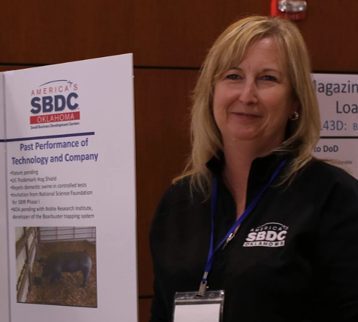
Barbara Bonner-Stephens and the Menace of Feral Hogs: Agricultural Technology and Entrepreneurship
September 8, 2023 by Jessika Leatherbury
By: Sunnie Dawn Baker
 The beauty of innovation is that sometimes ideas can come when you least expect them. That was the case for Barbara Bonner-Stephens. Bonner-Stephens was the Regional and Technology Commercialization Director for the Oklahoma Small Business Development Center (SBDC). Through the course of her work, she was surrounded by innovation and technology, but was more focused on the entrepreneurial aspects of her work. She had a passion for entrepreneurship as well as previous experience. She had a real estate company, retail businesses, and ran her own cattle ranch. As a single mom for thirteen years, until she married her husband Jerry in 2017, she did whatever it took to pay the bills, and that included starting her own businesses. However, through her work, she was had a random conversation with someone from another country who did business advising for startup companies. In passing, he made a comment about the feral hog problem and something in Bonner-Stephens’ mind clicked. In that moment, she became determined to venture into the world of tech entrepreneurship and solve this growing problem that plagues the majority of the Southern United States.
The beauty of innovation is that sometimes ideas can come when you least expect them. That was the case for Barbara Bonner-Stephens. Bonner-Stephens was the Regional and Technology Commercialization Director for the Oklahoma Small Business Development Center (SBDC). Through the course of her work, she was surrounded by innovation and technology, but was more focused on the entrepreneurial aspects of her work. She had a passion for entrepreneurship as well as previous experience. She had a real estate company, retail businesses, and ran her own cattle ranch. As a single mom for thirteen years, until she married her husband Jerry in 2017, she did whatever it took to pay the bills, and that included starting her own businesses. However, through her work, she was had a random conversation with someone from another country who did business advising for startup companies. In passing, he made a comment about the feral hog problem and something in Bonner-Stephens’ mind clicked. In that moment, she became determined to venture into the world of tech entrepreneurship and solve this growing problem that plagues the majority of the Southern United States.
Bonner-Stephens creation is called Hog Shield and it is a non-lethal, all-natural liquid feral hog repellent. Feral hogs are a menace. They will eat almost anything, uproot fields, and spread disease. They are strong and aggressive, and their population is booming. With the spike in the feral hog population, they are also spreading into new territories. The graphic below, provided by Bonner-Stephens, shows the spike in population from 1982 to 2022 as well as the increase in monetary damages. While feral hogs are a problem for farmers because they dig up fields and eat their seeds and crops, these hogs can also be a problem for college campuses, golf courses, cemeteries, military bases, and suburban lawns.

When Bonner-Stephens first started on her journey, she wanted to put something together that would repel hogs as a barrier spray. There were already granular repellents on the market, but they work as a learned response; the hogs must encounter it a few times before they are repelled. Also, if it is granular and you are spreading it in your yard, then there is the added concern of children or pets picking it up or eating it. Bonner-Stephens felt that a spray would be the best way to distribute her repellent. However, it was also very important to her that it was non-toxic and all-natural. She didn’t want it to affect fish, bees, or other wildlife and wanted to make sure that it would be safe to use on crops. However, while Bonner-Stephens wishes she would have paid more attention in chemistry class, she is not a chemist, so she needed a good starting off point and then she had the perfect idea: the list of ingredients that the U.S. Environmental Protection Agency had already certified as non-toxic. This would guarantee that her product was non-toxic, but also save time and money on testing and approval.
Bonner-Stephens was still working at the Oklahoma Small Business Development Center at the time and she prioritized helping other small businesses during the day. By necessity, she carried out her research and experimentation weekends and evenings. Her game room became a laboratory and she would spend long nights mixing different ingredients together, trying to perfect her recipe. She borrowed pigs from friends for testing purposes and for two years she would mix her concoctions, put some on a cotton ball, put it in a feed scoop, and hold it up to the pigs to see what they would do. However, she was not getting the results that she wanted. Bonner-Stephens says, “I don’t know how many times my husband said this wasn’t going to work. But then, when we finally had a pig back up, we knew that we had done it.” The excitement was thick in the air that night when years of hard work finally paid off. However, finding the formula was only the first step. Bonner-Stephens needed to do more testing and take the steps necessary to journey into starting a business as an entrepreneur.
Bonner-Stephens knew the resource partners that she could go to from her experience as an entrepreneur and as a former regional director for the Oklahoma Small Business Development Center. She says, “People were willing to help. People don’t know what you need unless you ask. And the more people you talk to, the more you learn.” She has had farmers offer to do field trials and talk to her about their own specific needs. In fact, through some of these conversations, Bonner-Stephens realized that another market for Hog Shield could be treating seeds before they are planted to repel the hogs from fields. They have already experimented with that process, and not only does it work, but it also does not interfere with the germination of the plant.
Bonner-Stephens has already gone through Cultivate Oklahoma, a pre-accelerator program provided by the Oklahoma Farm Bureau, where she spent a week in Oklahoma City, meeting with producers and participating in a boot camp to help her prepare to apply for the AgLaunch365 agricultural business accelerator. Bonner-Stephens hopes to be accepted into the Fam Bureau’s AgLaunch accelerator, where she will have further opportunities for field trials, business support, and investment opportunities. According to the Oklahoma Farm Bureau website, “AgLaunch365 features a farmer-first open innovation model, and offers innovators six weeks of agricultural-specific business development curriculum with ongoing business coaching for two years, along with on-farm trials where innovators benefit from the input of farmers and ranchers with generations of hands-in-the-soil experience.” This could be the opportunity that Bonner-Stephens needs to bring Hog Shield to the market.
It was a random conversation that transformed Barbara Bonner-Stephens into a tech entrepreneur. While once she was in the position to help innovators, now she can join their ranks while also helping people mitigate the damage caused by feral hogs. While many might think of tech entrepreneurship as software development or computer hardware, innovations in agriculture are heavily focused on developing and implementing technology. They affect us on fundamental levels, from the things we eat, the crops we produce, and the environment that sustains us. Feral hogs can threaten all of this, but not if Bonner-Stephens gets her way.
Sign up to receive more news from the Ada Jobs Foundation HERE!
Written by
Jessika Leatherbury
You may also interested in:
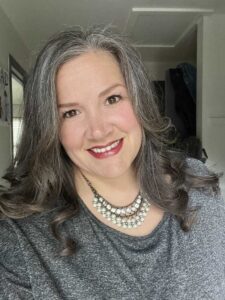
Adapt and Overcome: Allison Poe’s Recipe for Resilience and Growth
By: Sunnie Dawn Baker Allison Poe has always followed her feet. She waits for the signs to appear and, once she recognizes them, she travels that path, and has never
Jeff Warren: A Life in Sound, Vision, and Storytelling
By: Sunnie Dawn Baker When Jeff Warren got involved in the Houston music scene as a teenager, he had no clue where his path would lead. Now, nearly thirty years
From Pitch to Progress: ECU's Glass Recycling Program Turns Waste into Opportunity
By: Sunnie Dawn Baker In 2018, Dr. Christine Pappas competed in Ada Jobs Foundation’s Big Pitch Competition by promoting grinding glass bottles into sand. She won the Big Pitch that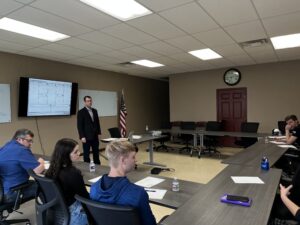
The Importance of Customer Discovery: Know Your Audience and Know Your Market
By: Sunnie Dawn Baker Entrepreneurs and small business owners must consider many factors to achieve success, with their target market being one of the most crucial. Sometimes, when people are
What Does Economic Development Do for You? The Significance of the Economic Multiplier
By: Sunnie Dawn Baker People often find the term “economic development” vague and confusing. Understanding how economic development works and benefits the community can be challenging. Though there are many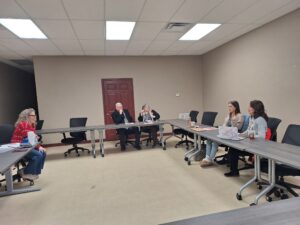
Helping Entrepreneurs One Workshop at a Time: Lauri Rowe and QuickBooks for Small Businesses
Entrepreneurs tend to be filled with passion and big ideas. They have found a solution to a problem they see in the world, and they barrel ahead, excited for their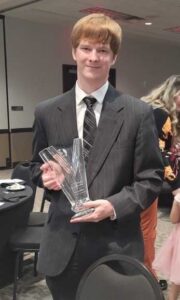
Hunter Cook: Technology, Entrepreneurship, and the Written Word
By: Sunnie Dawn Baker Hunter Cook started writing when he was seven years old. At first, he wanted to write comic books, but then he realized he couldn’t draw. He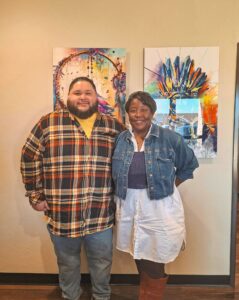
Empowering Native Artists: FAME App Brings Innovation to First American E-Commerce
By: Sunnie Dawn Baker Entrepreneurs are problem solvers. They are constantly striving for solutions to issues they see in the world or in their own lives. In the case of
Learn, Connect, and Grow: 2025 Workshops for Aspiring and Current Business Owners
By: Sunnie Dawn Baker A new year brings new possibilities, and, at the Ada Jobs Foundation, it also brings a new round of programming and workshops. As the local Economic